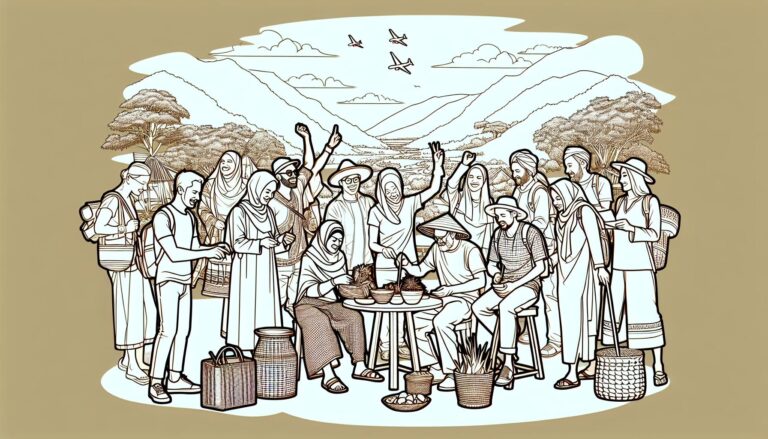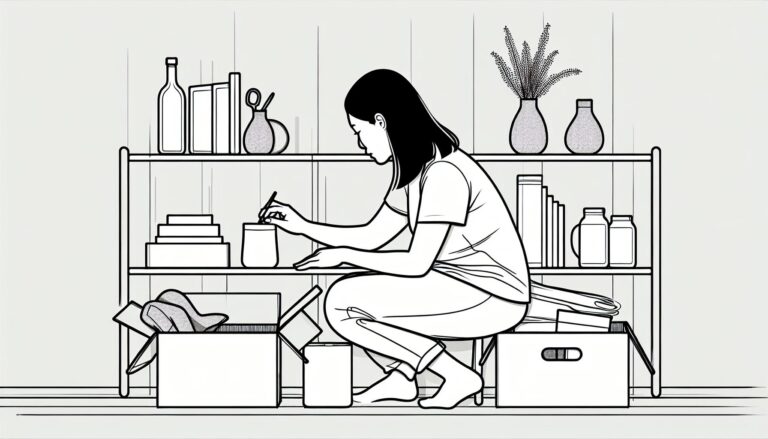As a sustainability advocate, I’m always on the lookout for innovative ways to reduce our environmental impact. When it comes to food packaging, the choices we make can have a significant effect on our planet. In this article, I’ll delve into the world of sustainable food packaging alternatives, exploring eco-friendly options that are revolutionizing the way we package and consume food.
From biodegradable materials to compostable packaging solutions, the market is brimming with sustainable alternatives that not only preserve the freshness of our food but also minimize waste. Join me as I uncover the latest trends in sustainable food packaging and how these alternatives are shaping the future of the food industry. Let’s embark on a journey towards a greener, more sustainable way of packaging our favorite foods.
Importance of Sustainable Food Packaging
When it comes to sustainable food packaging, there are several key reasons why it’s essential for the environment and our future. Here are some crucial points to consider:
- Reduction of waste: Sustainable packaging helps minimize the amount of waste generated, contributing to a cleaner and healthier planet.
- Resource conservation: By using eco-friendly materials in packaging, we reduce the consumption of natural resources, helping to preserve them for future generations.
- Lower carbon footprint: Sustainable packaging options often have a lower carbon footprint compared to traditional packaging, making them a better choice for the environment.
- Enhanced brand image: Embracing sustainable food packaging can improve a brand’s image and appeal to environmentally conscious consumers.
- Encourages innovation: The shift towards sustainable packaging drives innovation in the industry, leading to the development of new and improved packaging solutions.
As awareness of sustainability grows, so does the demand for eco-friendly packaging alternatives. It’s clear that the importance of sustainable food packaging goes beyond just reducing waste – it’s about creating a more environmentally conscious and responsible approach to how we package our food.
Biodegradable Materials in Food Packaging
When it comes to sustainable food packaging alternatives, biodegradable materials play a crucial role in reducing environmental impact. This type of packaging is designed to break down naturally in a composting environment, offering a more eco-friendly solution compared to traditional plastic packaging.
Some key points to note about biodegradable materials in food packaging include:
- Compostable Nature: Biodegradable materials are compostable, meaning they can decompose into natural elements without leaving harmful residues behind.
- Reduced Waste: By using biodegradable packaging, we can significantly reduce the amount of waste that ends up in landfills or oceans.
- Renewable Resources: Many biodegradable materials are made from renewable resources such as plant-based polymers, which helps in conserving fossil fuels.
- Lower Carbon Footprint: The production of biodegradable materials generally has a lower carbon footprint compared to traditional plastic packaging, contributing to a more sustainable supply chain.
As the demand for sustainable packaging continues to rise, the use of biodegradable materials in food packaging is becoming increasingly popular among consumers and businesses alike. Embracing these alternatives not only showcases a commitment to environmental stewardship but also encourages further innovation in the industry towards a more sustainable future.
Compostable Packaging Solutions
When it comes to sustainable food packaging, Compostable Packaging Solutions are at the forefront. These innovative materials are designed to break down into natural elements in composting environments, reducing waste and minimizing environmental impact.
- Compostable nature: These materials can completely biodegrade into nutrient-rich compost, contributing to a circular economy.
- Renewable resources: Compostable packaging is often made from renewable resources like plant-based polymers, further reducing reliance on fossil fuels.
- Lower carbon footprint: Compared to traditional plastics, compostable packaging has a lower carbon footprint, helping to combat climate change.
- Increased demand: The growing demand for sustainable packaging has accelerated the adoption of compostable materials in the food industry.
Innovations in Sustainable Packaging
When it comes to sustainable food packaging, innovation plays a key role in driving change and promoting environmental responsibility in the food industry. As consumers become more conscious of their environmental impact, the demand for eco-friendly packaging alternatives continues to rise.
One of the notable innovations in sustainable packaging is the development of edible packaging. These solutions are made from natural ingredients such as seaweed or starches, providing a biodegradable and edible option for packaging various food products.
Another exciting development is the use of recycled materials in packaging. By repurposing materials like paper, glass, or metal, companies can reduce the need for virgin resources and minimize waste.
Moreover, smart packaging technologies are emerging as a sustainable solution. These technologies incorporate features such as RFID tags for tracking and monitoring food freshness, extending shelf life, and reducing food waste.
Innovations in sustainable packaging are essential for driving positive environmental change in the food industry and meeting the growing demand for eco-conscious solutions.
Shaping the Future of the Food Industry
As we look ahead, it’s clear that sustainable food packaging alternatives are shaping the future of the food industry in significant ways. Let’s delve into some key aspects driving this transformation:
- Consumer Awareness: More than ever, consumers are becoming environmentally conscious, driving the demand for eco-friendly packaging solutions. Brands that prioritize sustainability in their packaging are likely to resonate with this growing segment of mindful consumers.
- Regulatory Environment: With increasing regulations on single-use plastics and non-biodegradable materials, the food industry is compelled to adopt more sustainable practices. This shift is not only driven by consumer demand but also by governmental policies aimed at reducing environmental impact.
- Technological Innovations: The integration of smart packaging technologies is revolutionizing the way food products are packaged and monitored for quality and freshness. From RFID tags to temperature-sensitive labels, these innovations ensure that food stays fresh longer, reducing waste along the supply chain.
- Collaborative Efforts: In a collaborative effort towards sustainability, stakeholders across the food industry supply chain are coming together to explore innovative packaging solutions. From manufacturers to retailers and consumers, this collective approach is essential for driving meaningful change in the way we package food.
Looking ahead, sustainable food packaging alternatives are not just a trend but a necessity for a more environmentally responsible food industry. It’s exciting to see how these advancements will continue to shape the future landscape of food packaging, promoting a greener and more sustainable ecosystem for all.
Key Takeaways
- Sustainable food packaging helps reduce waste, conserve resources, lower carbon footprint, enhance brand image, and encourage innovation in the industry.
- Biodegradable materials in food packaging are compostable, reduce waste, come from renewable resources, and have a lower carbon footprint compared to traditional plastics.
- Compostable packaging solutions break down into natural elements, are made from renewable resources, have a lower carbon footprint, and are in high demand.
- Innovations like edible packaging, recycled materials, and smart packaging technologies are driving positive environmental change in the food industry.
- Consumer awareness, regulatory environment, technological innovations, and collaborative efforts are key aspects shaping the future of the food industry towards sustainability.
Conclusion
Sustainable food packaging is a game-changer in the food industry, driven by consumer preferences, regulatory demands, and technological advancements. It’s not just a trend but a vital step towards a greener future. Collaboration among supply chain partners is key to unlocking innovative solutions. Embracing eco-friendly packaging isn’t just a choice; it’s a responsibility we owe to our planet. Let’s continue to prioritize sustainability in packaging practices to create a more environmentally conscious food industry.



